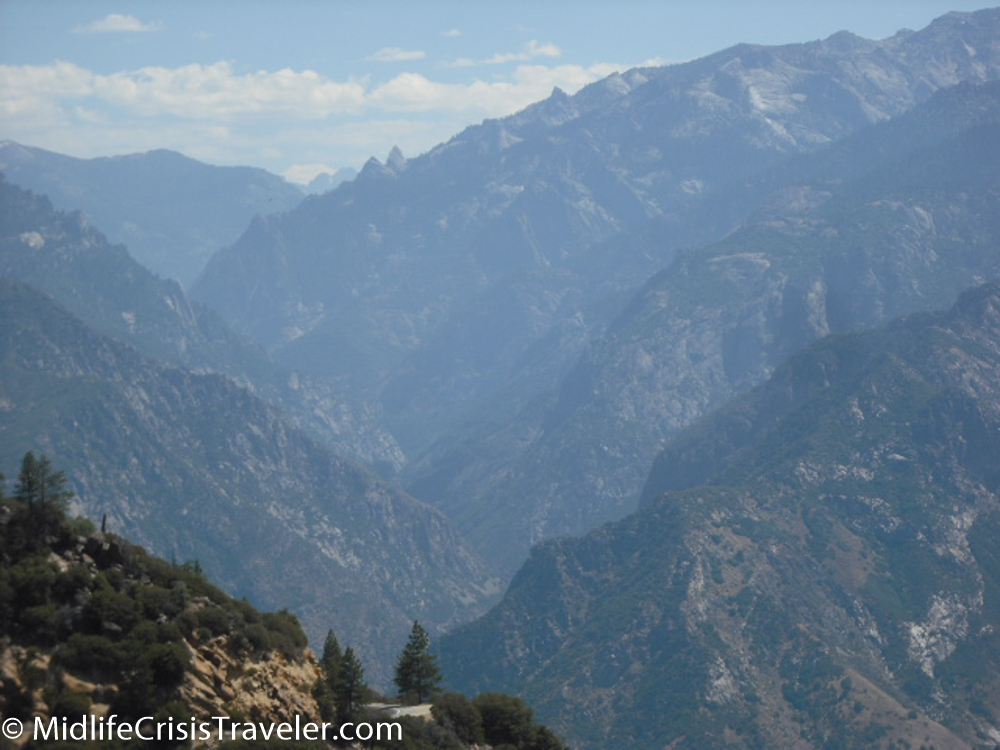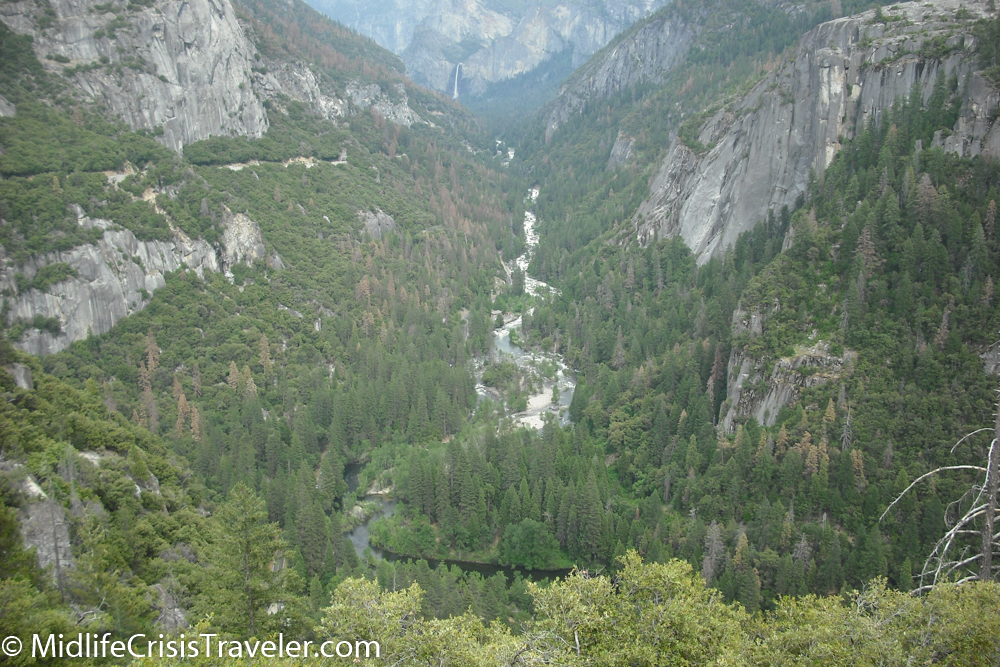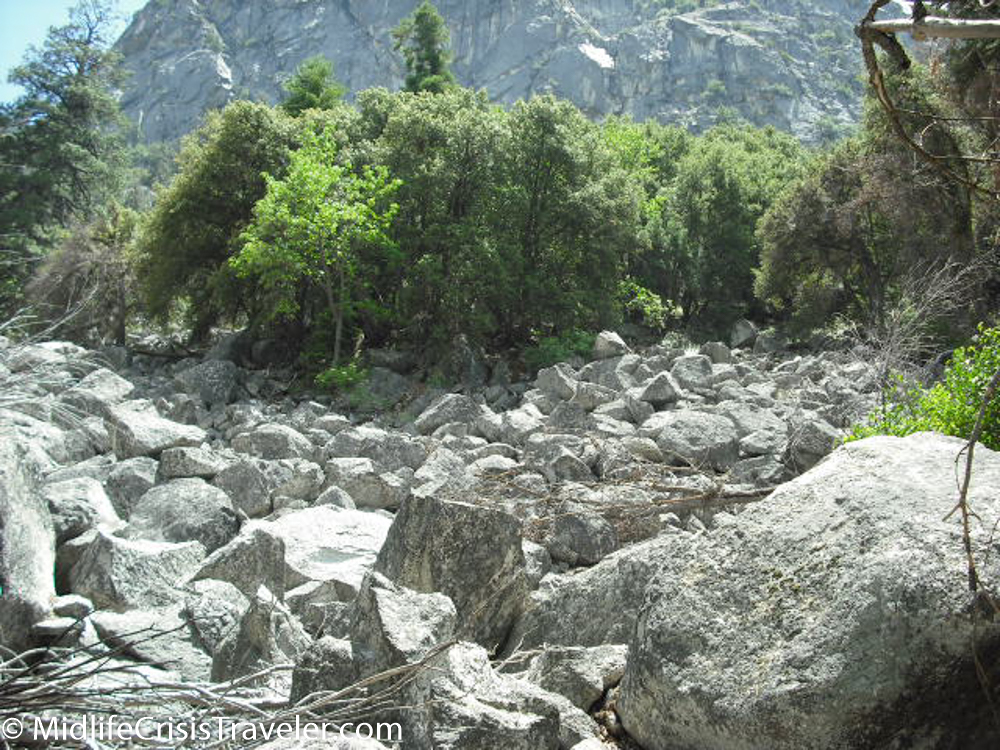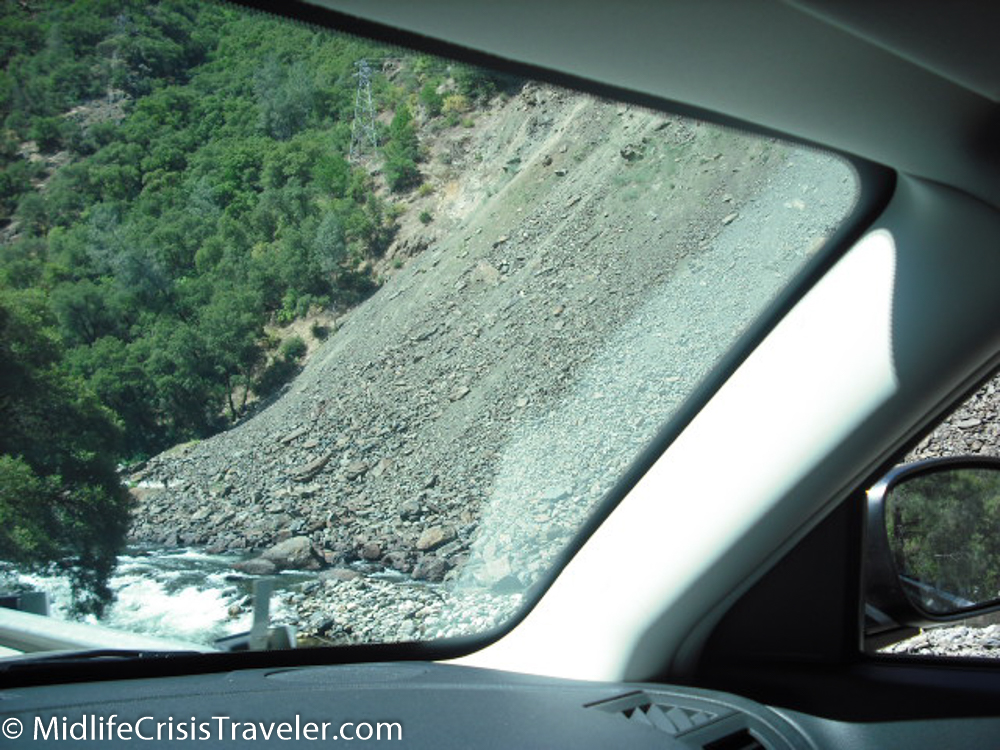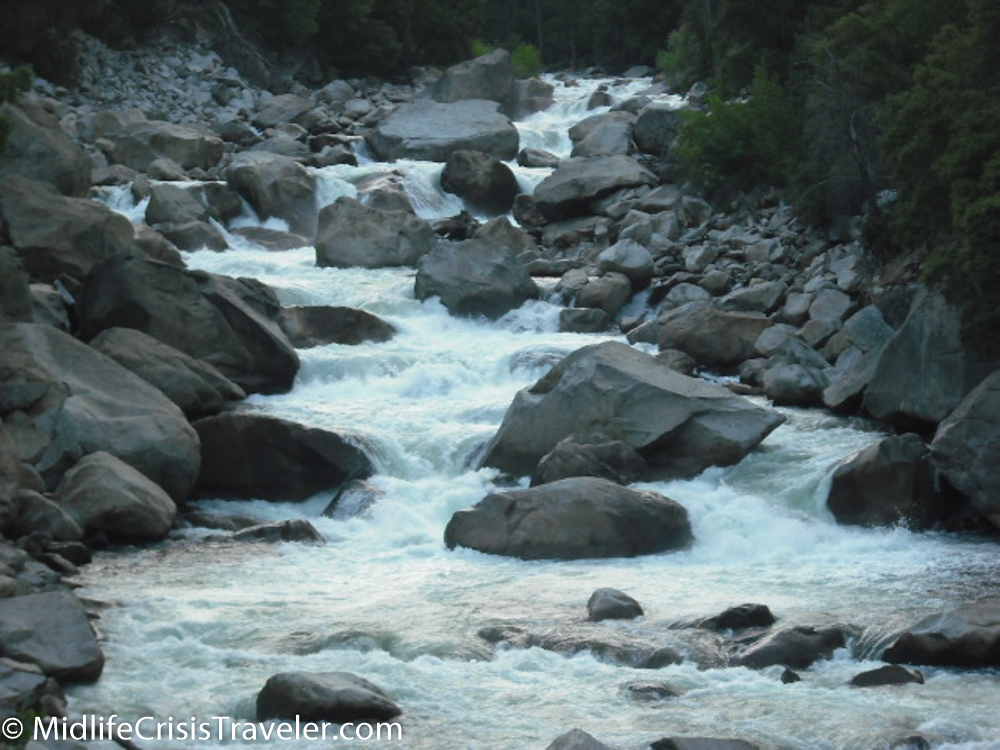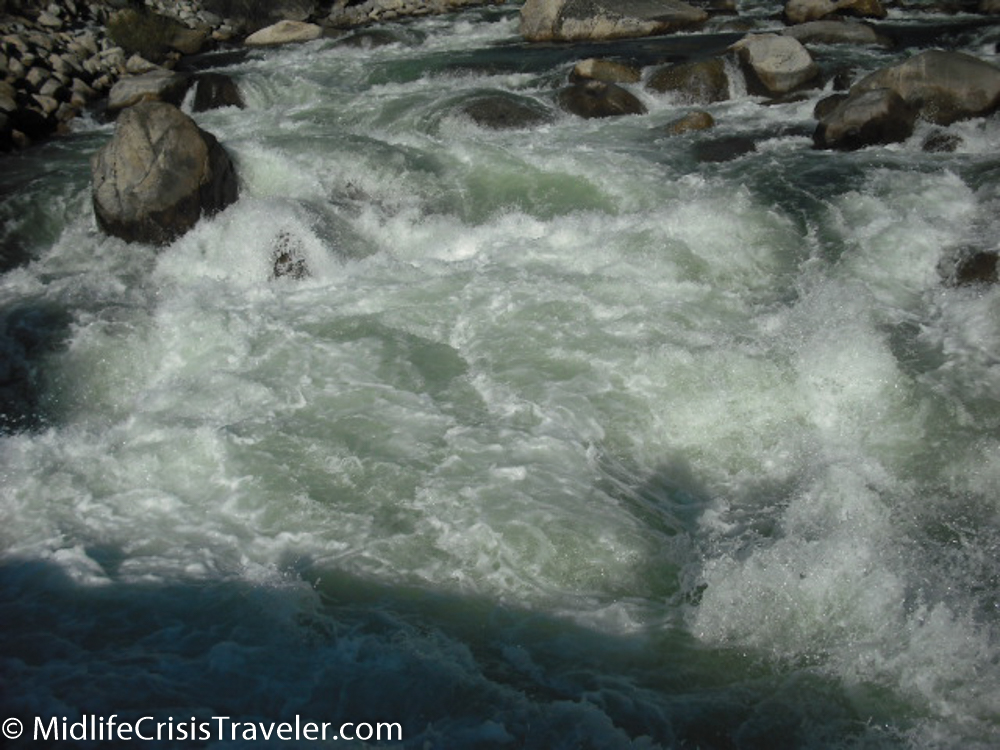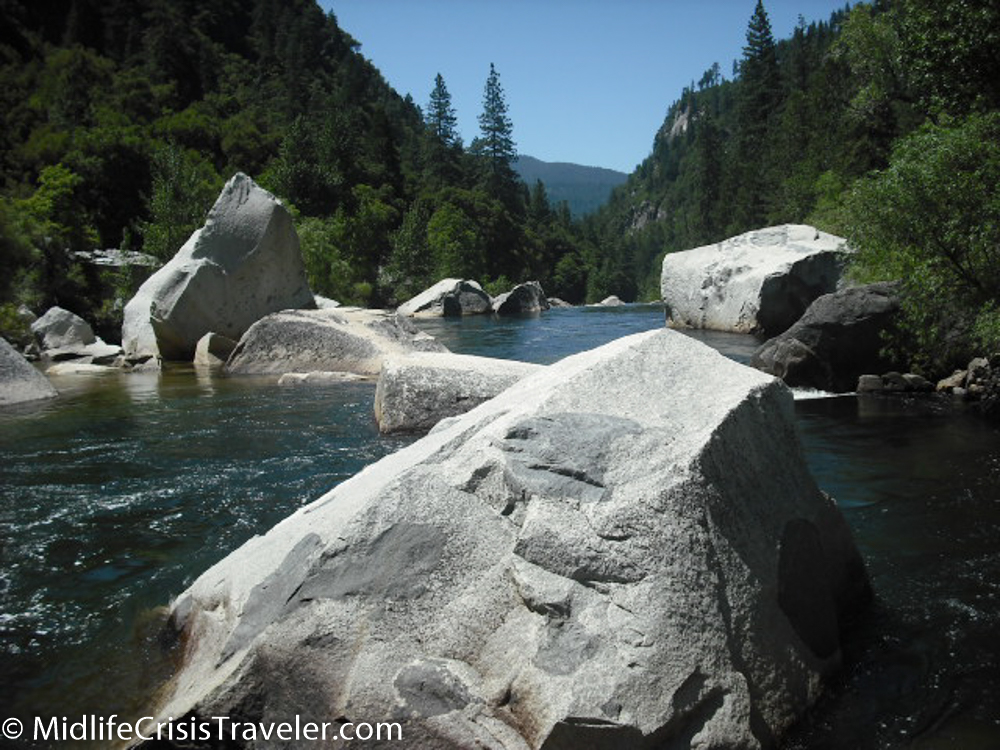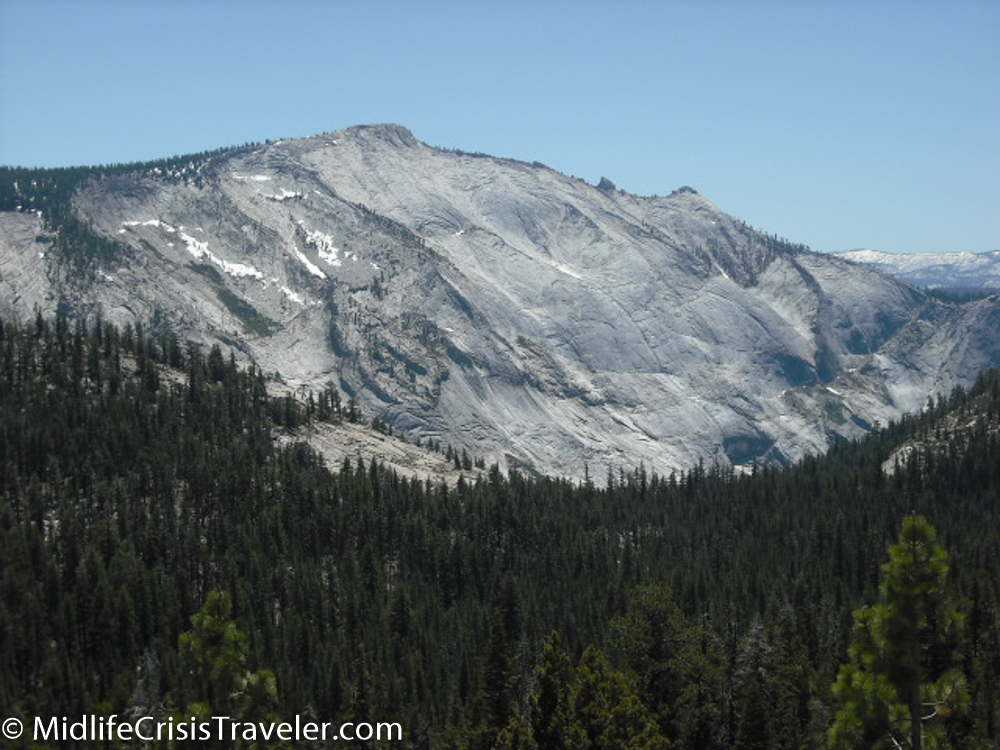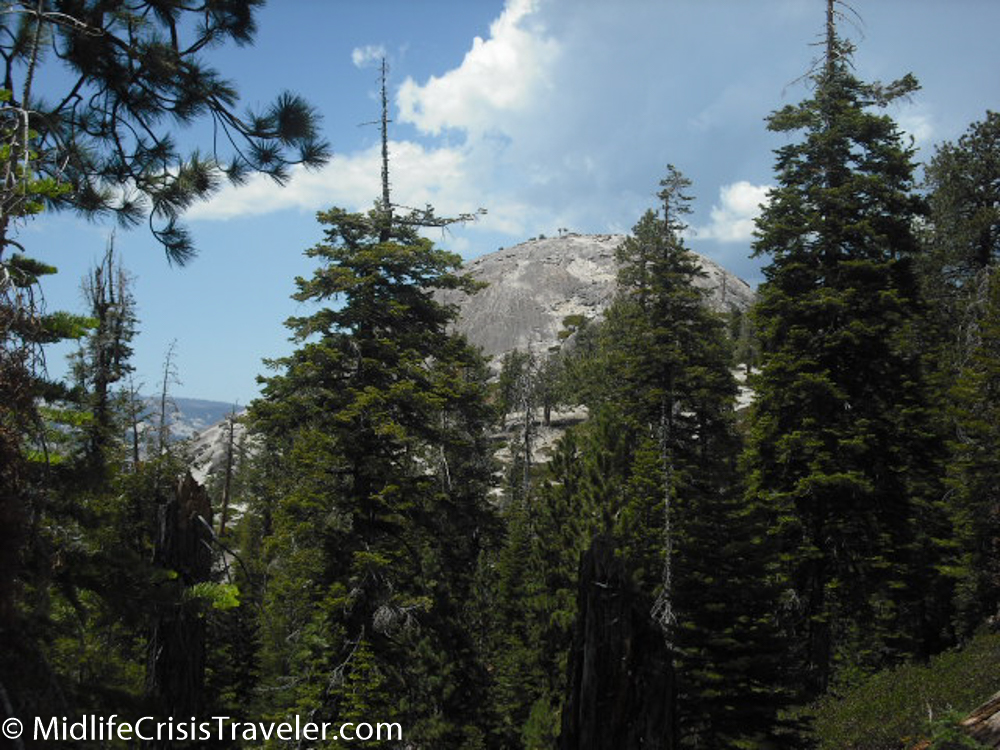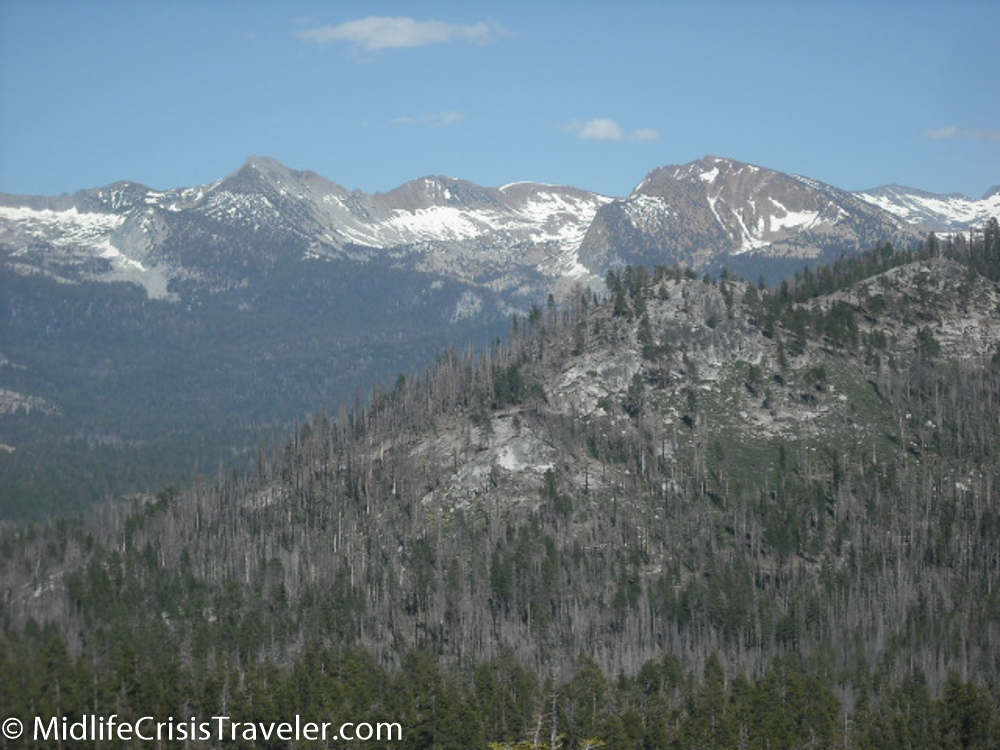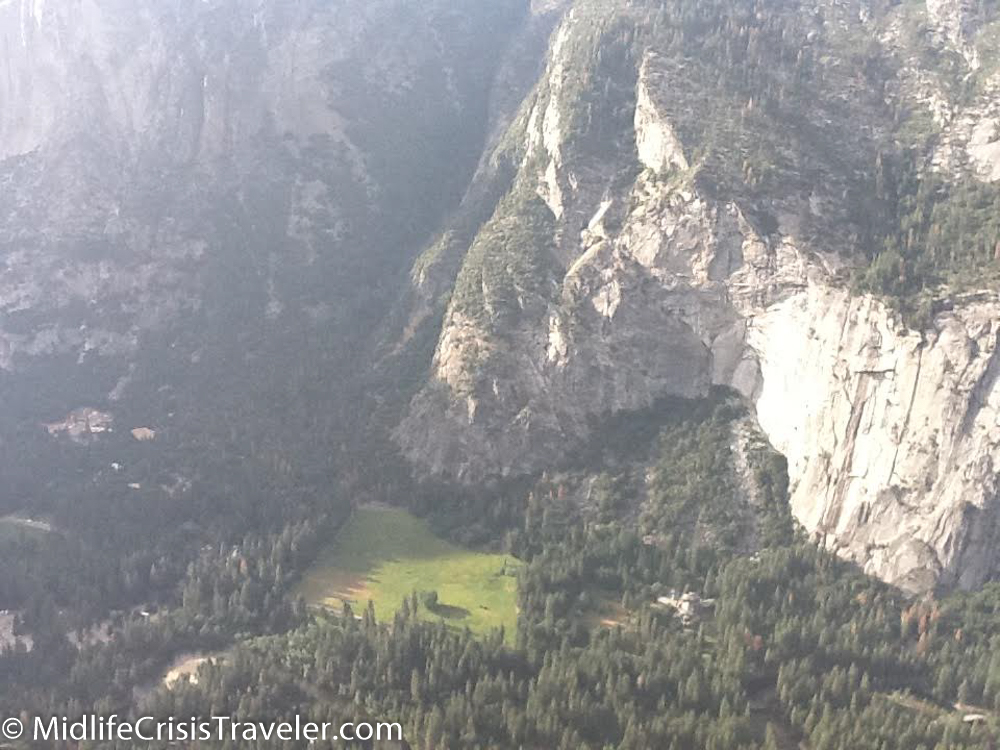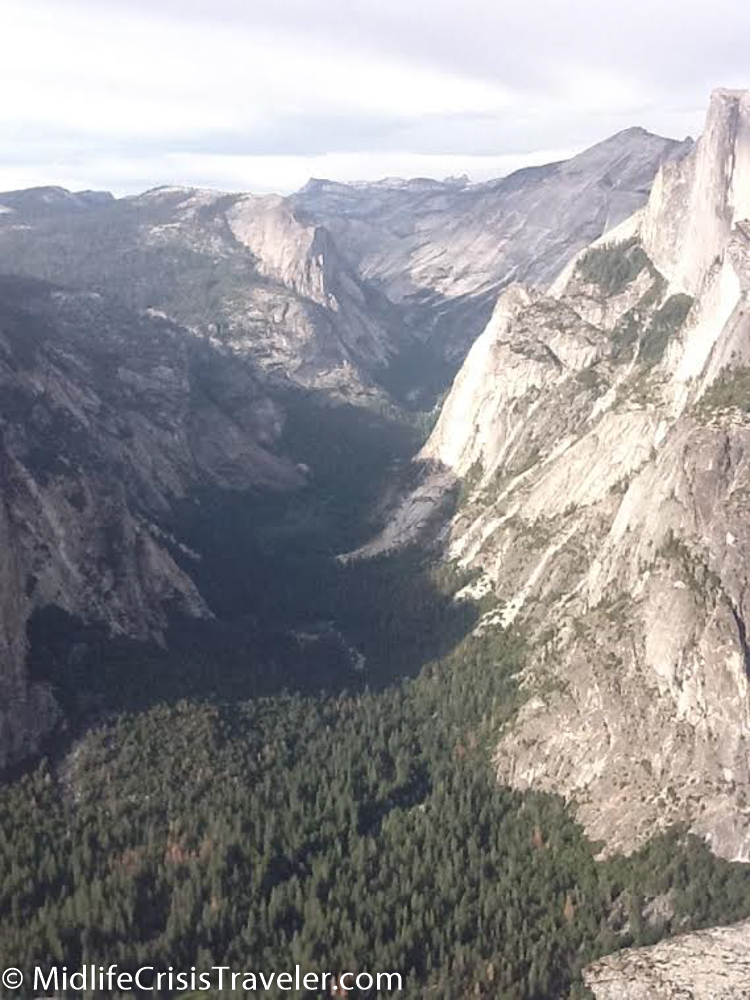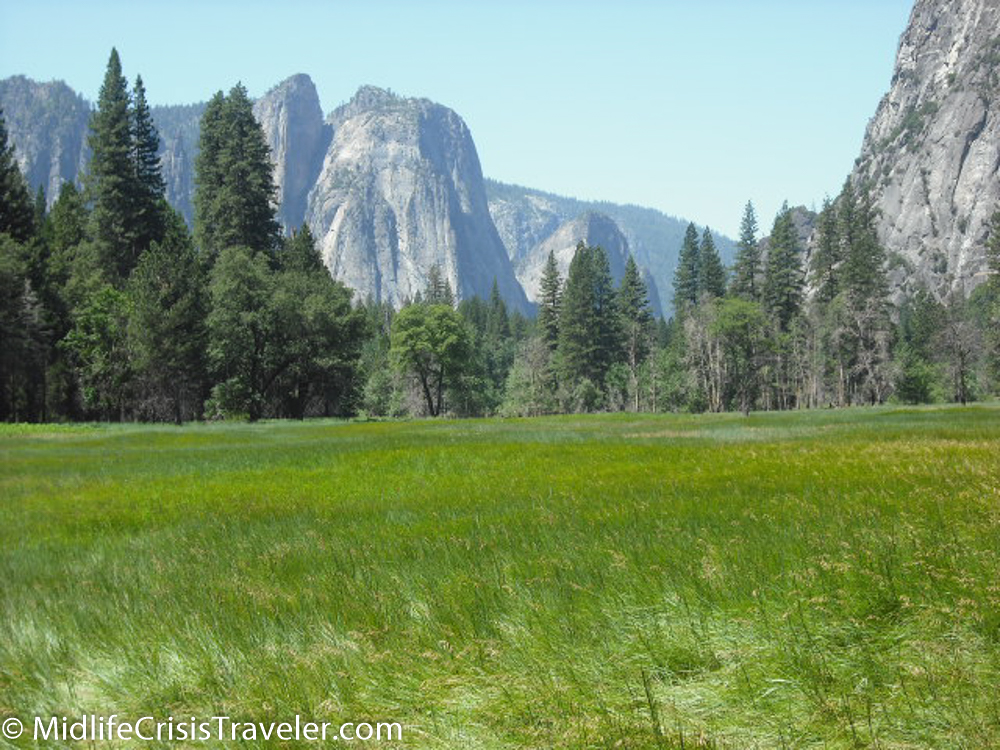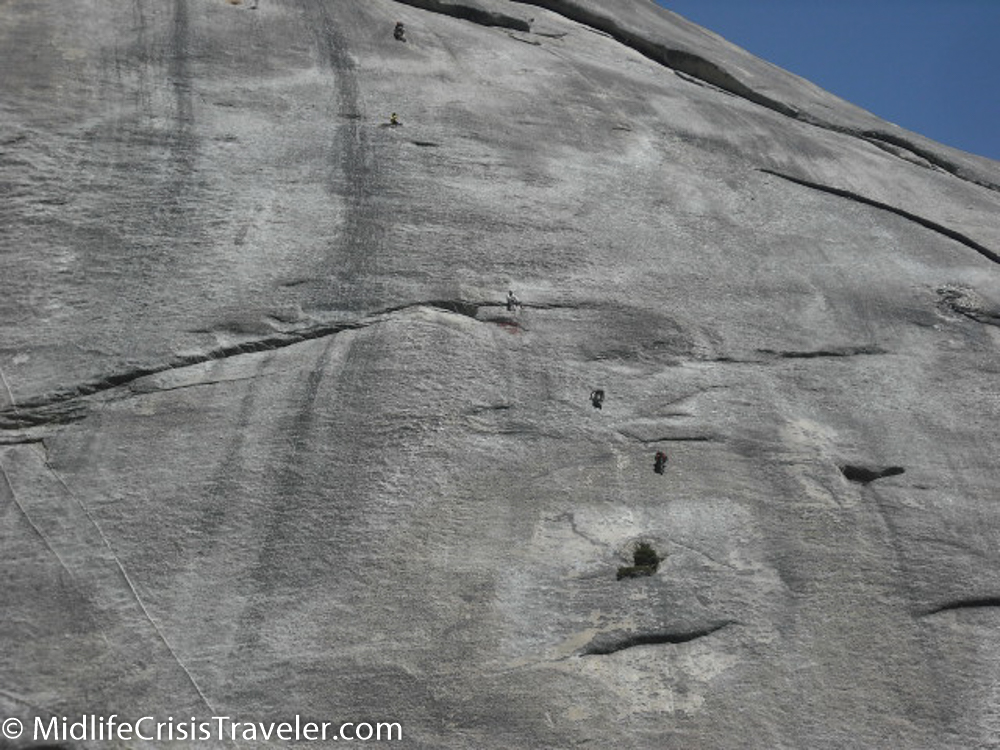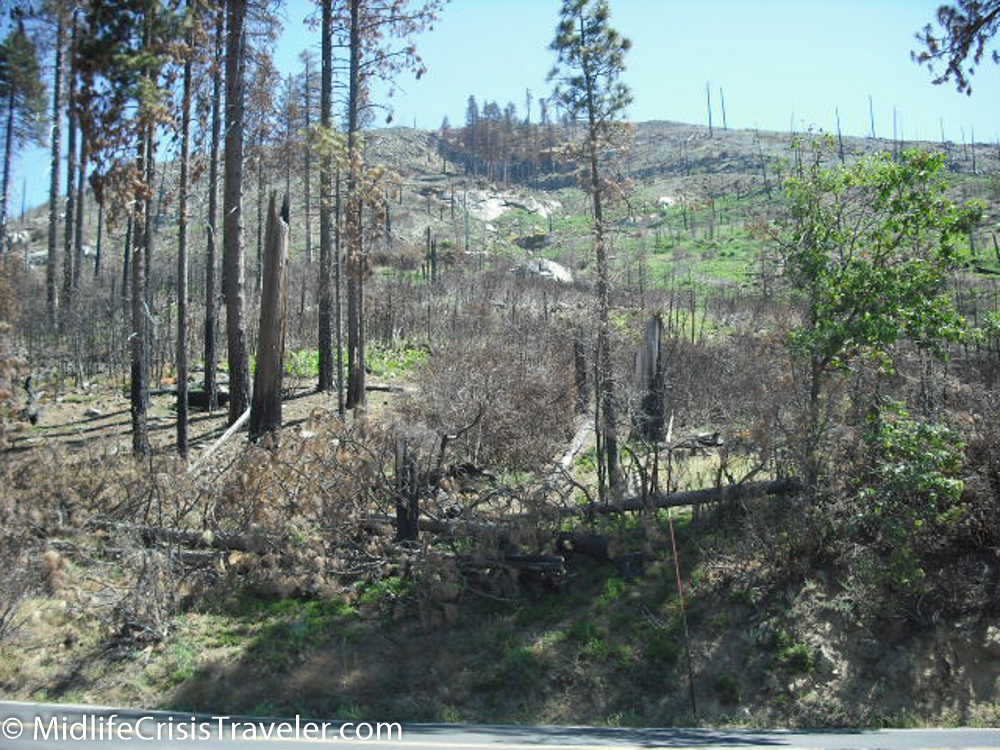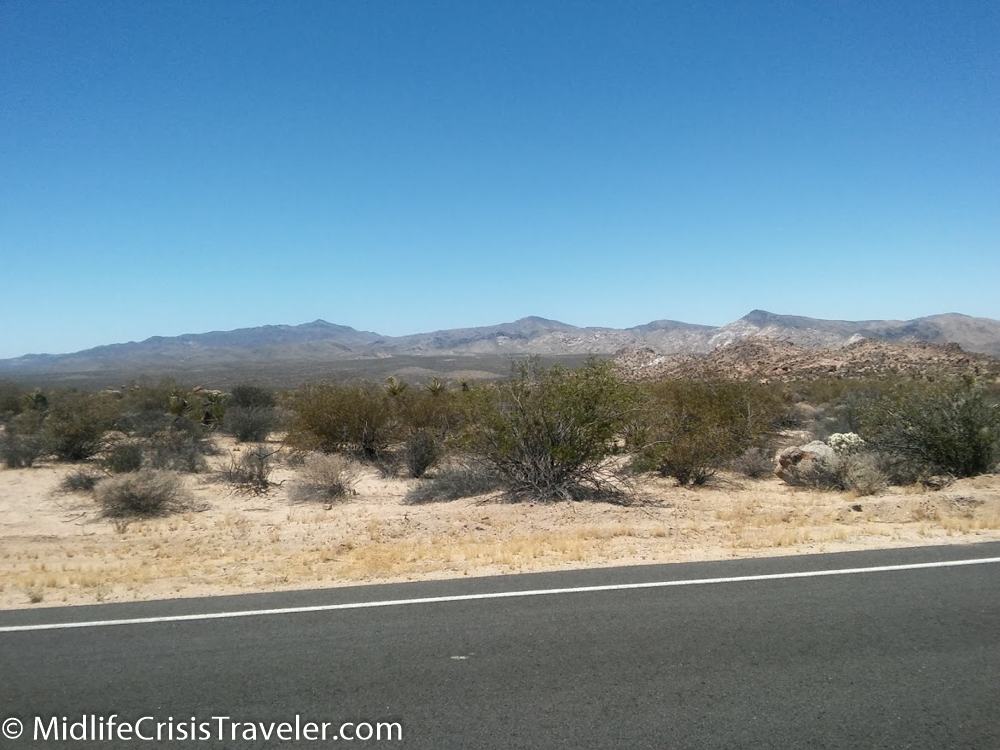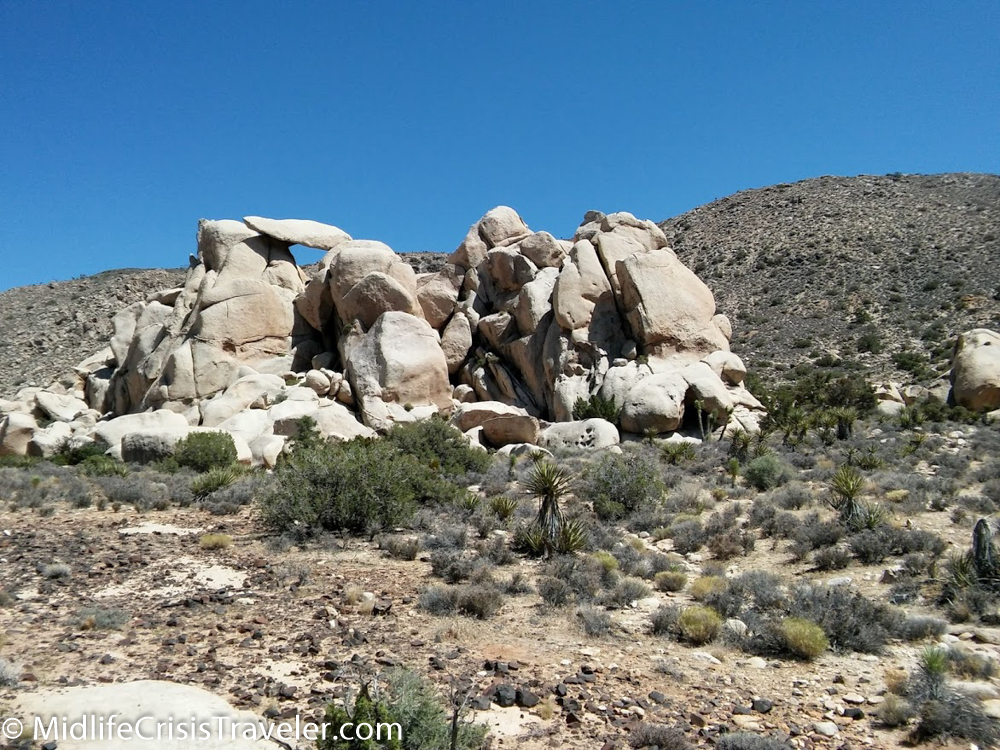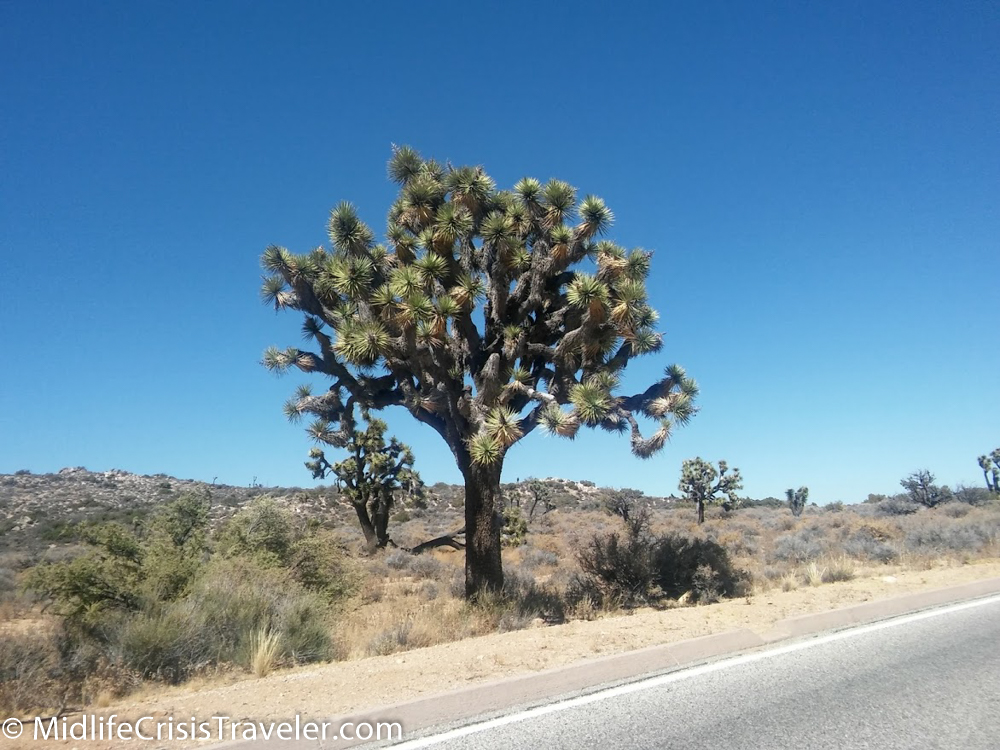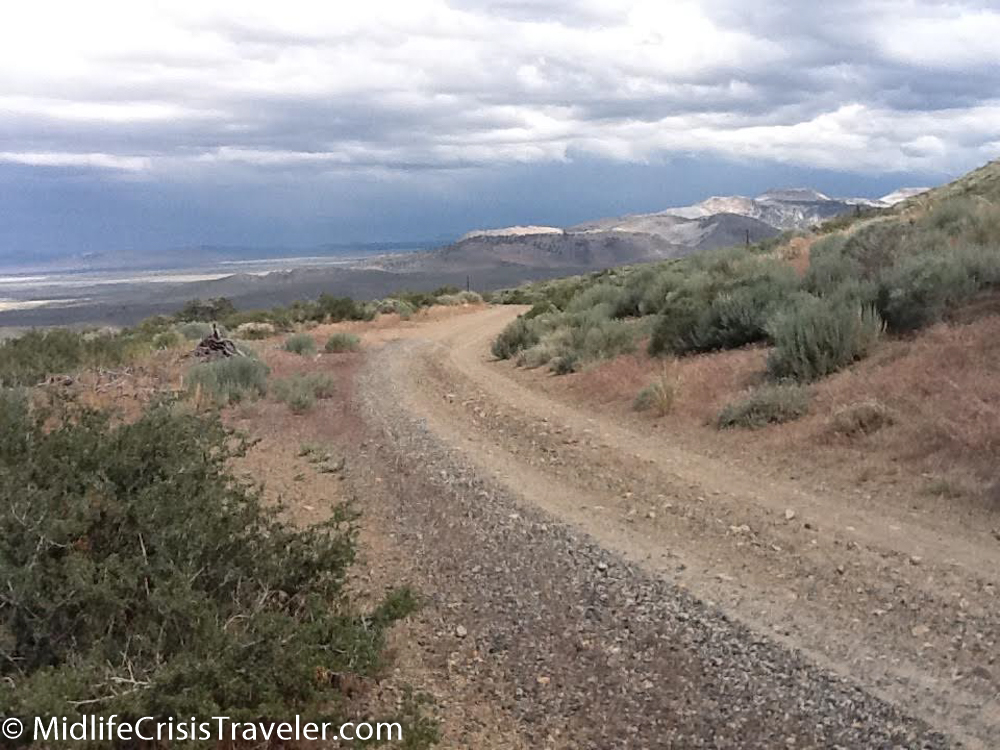I leisurely drove down Route 180 from my hotel in Fresno to the fork in the road where you can either choose to turn right to visit Sequoia National Park or bear left to enter Kings Canyon National Park. I was extremely excited to visit Sequoia NP because it has a grove of trees which are some of the largest and longest living organisms in the world. But Kings Canyon? I had never heard of the place. Sequoias would have to wait while my curiosity won out.
As I entered the visitor center a park ranger exclaimed, “Welcome to Kings Canyon National Park!”.
I responded, “Um, to be honest, I’ve never heard of this place”.
She smiled and said, “Yeah, we like it like that. The other parks get big crowds. We are happy with being off the radar.”
The Kings River carves its way through the valley.
She explained that Kings Canyon is unique in that it has two valleys. One is a V-shaped valley which was formed primarily by water erosion and a U-shaped valley which was formed when a glacier receded and pulled much of the rocks and sediment away. So melted snow and ice turned into water and formed the V valley and frozen water formed the U valley. Interesting. I decided to investigate both valleys.
The roads curve around a dangerous landscape of rocks and boulders.
The V valley was amazing. Sharp slopes had been carved into the mountains leaving them with jagged ravines for the water to flow. Even from a couple thousand feet above, I could hear the roar of the Kings River below.
The base of the mountains in the U valley were littered with massive granite boulders larger than cars and houses. This left the U valley with wide gorges where grass and ferns grew waist-high and covered the valley floor.
I'm 6 feet tall and about 275lbs in this picture. This is a massive hunk of granite.
Although I knew nothing about Kings Canyon National Park until I walked into the visitor center that day, I am forever grateful that I explored this national park. I now believe that Kings Canyon NP is one of the most underrated places in the entire country. I highly recommend this park for a day or week-long visit.
Have you visited Kings Canyon NP? Did you like it? Would you agree that it is an underrated park?
For more information about Kings Canyon National Park, click the link below.

